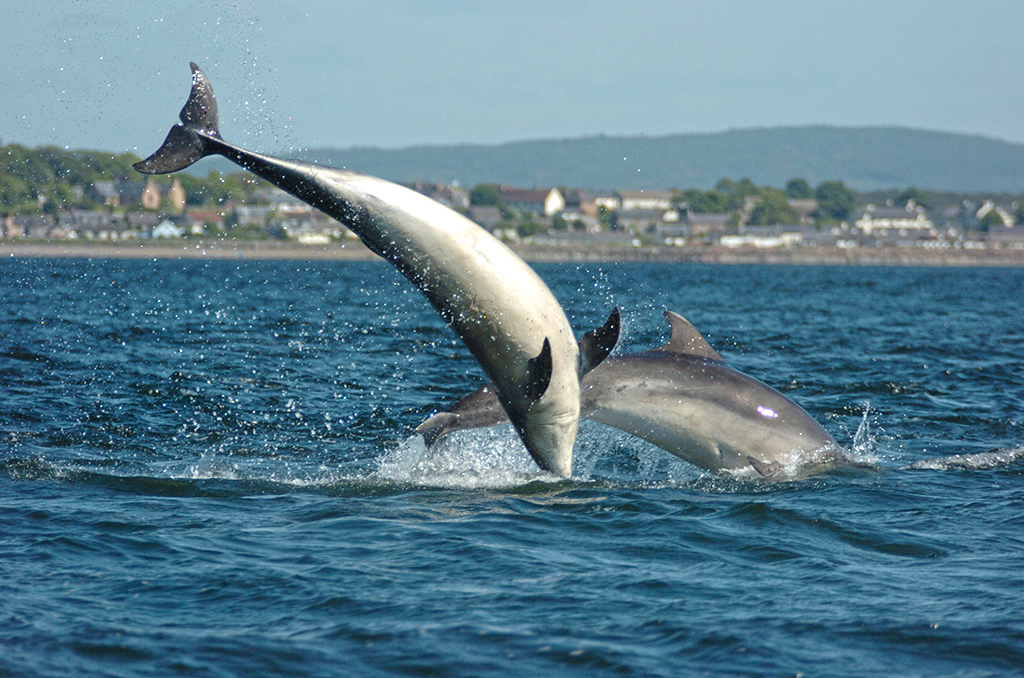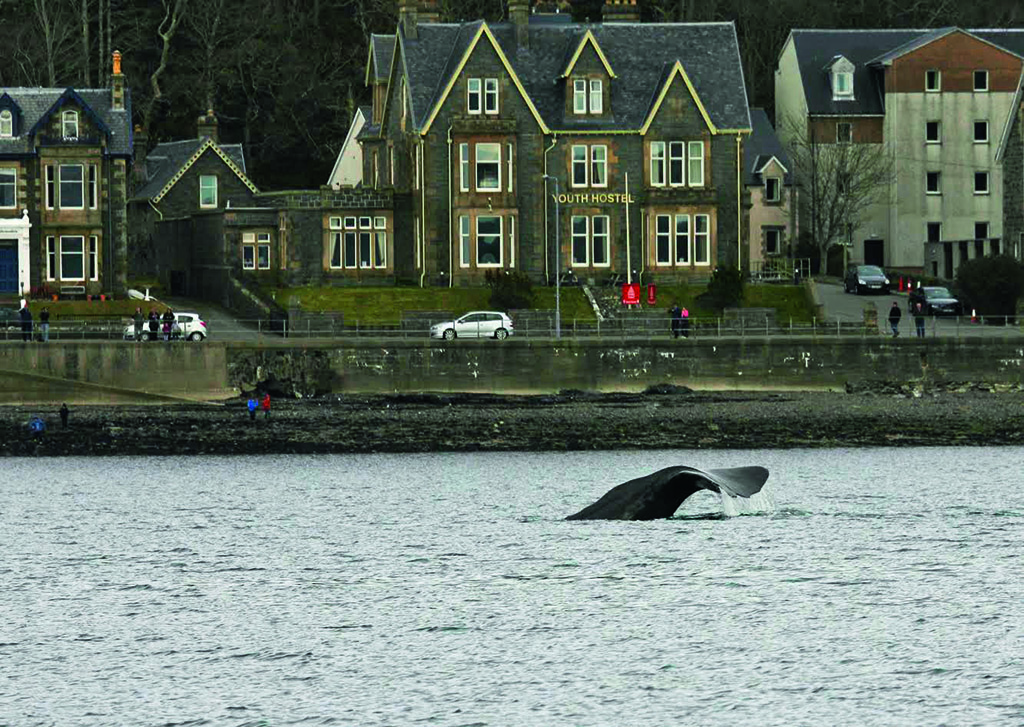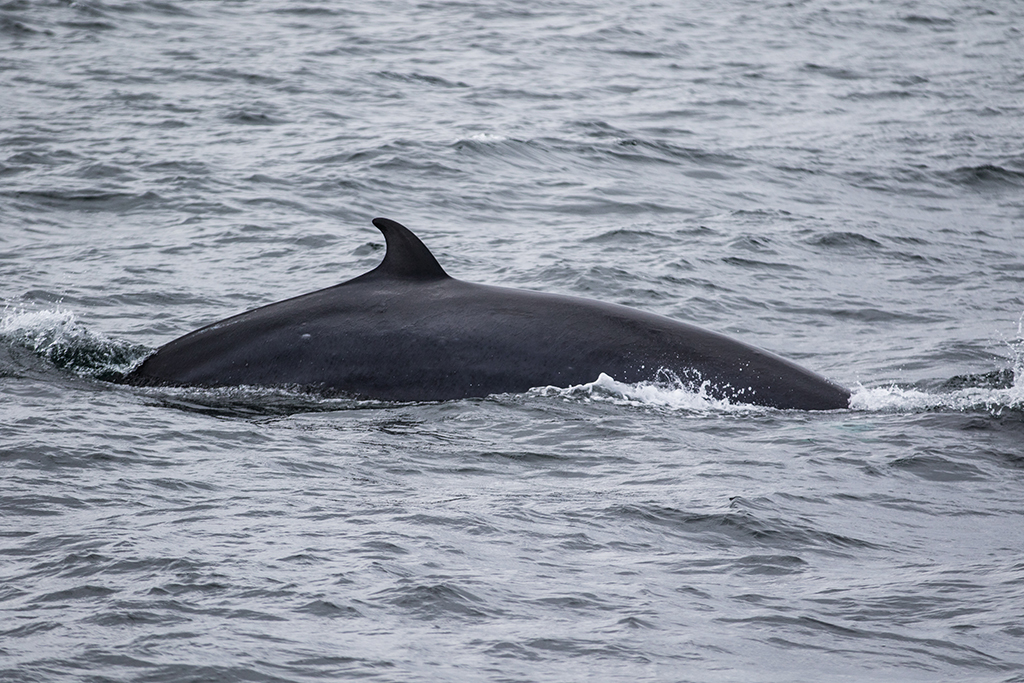
Our cetaceans don’t always have a whale of a time
Scotland’s waters are among the world’s richest when it comes to spotting whales and dolphins, and they’re also vital for conservation of the species.
Not long after two dead minke whales washed ashore at a popular beach on Skye, they were towed to Ardnamurchan to be blown up. The event coincided with one of our family’s regular visits to Ockle on the coast, and my son Freddy, eight years old and already passionate about whales, was desperate to see them.
Alas, all that was left by the time we got there was rancid blubber and shattered bone. ‘Those aren’t minke whales,’ he commented with huge disappointment, ‘they’re manky whales!’
As we laughed at his hilarious put-down, he, undeterred by the putrefaction, insisted on ferreting out a large piece of bone; it became the prize exhibit on his school’s nature table. It seems whales and dolphins and everything about them have the power to inspire awe in all ages.
Cetaceans, from the Greek ketos, meaning ‘large sea creature’, fascinate us, yet we still know relatively little about them. We have abused them probably more than almost any other creatures; indeed, for a time Dundee was the largest whaling port in Europe, and whale oil is said to have lubricated the wheels of the Industrial Revolution. Sadly, cetaceans are under grave threat; pollution is a growing issue globally and, in some areas, the seas are not only littered with plastics but also laced with toxic chemicals.

Bottlenose dolphins in the Moray Firth
Marine tourism is one of the fastest growing leisure activities in Scotland. Thankfully, we are evolving from hunters to observers, and finally appear to appreciate these incredible and highly intelligent mammals.
Warm-blooded, air-breathing and streamlined, they may be divided into two groups: odontoncetes, which have teeth; and mysticetes, creatures that have extraordinary baleen plates, comb-like structures for sieving plankton and small fish. These baleen cetaceans have two blowholes, while their toothed cousins have one. Both breathe through their lungs, inhaling and exhaling through these blowholes. It is this warm air and water that produces the ‘blow’ that is often visible from a distance. Experts are sometimes able to recognise a particular species just by the ‘blow’ alone.
While crossing to Orkney on the catamaran Pentalina last June, we had a superb view of a group of orcas – killer whales – in the Pentland Firth. As the obli ging captain stopped the boat and made an announcement, everyone rushed on deck. The sighting of five of these distinctive creatures, the largest members of the dolphin family, caused an electrifying frisson.
I was astounded that some of those on board had no idea that it was possible to see whales around Britain’s coast. For me, it was no surprise.
I saw my first orca off Ardnamurchan Point when I was a child, and have been lucky enough to see them quite a few times since, in the west, and in Orkney and Shetland. There are 24 species of cetaceans recorded in the UK, though a few of these are seldom seen (and then only as badly bloated carcasses).
From the commonly spotted harbour porpoise, to the bottlenose dolphin riding in the wake of a boat, and a rare sperm whale that drew a concerned audience around Oban Bay in 2013, Scotland is home to a diverse range of cetaceans. You can sometimes also see the vast fin whale, the humpback and the beautiful Risso’s dolphin.

The rare sight of a sperm whale in Oban Bay
One of the first organised whale-watching trips I took was with Sea Life Surveys, some 20 years ago. Based at Dervaig on Mull, it was set up by Richard Fairbairns, who had been captivated by a close encounter with a minke whale in 1982 and realised how little we knew about the cetaceans of the Inner Hebrides.
With advice from whale biologists Vassili Papa stavrou and Jonathan Gordon, he set up the Mull Cetacean Project. To fund the work, he and his family pioneered whale-watching holidays, taking visitors out and teaching them how to collect enlightening data. His son James continues this research today.
Recognising the need for a specific charitable organisation, in 1994 the Hebridean Whale & Dolphin Trust (HWDT) was created. It works closely with people in the islands and this year it is running an outreach and sightings project involving 15 communities.
The HWDT is always looking for volunteers as, from April to October, a team of scientists sail Hebridean waters in Silurian, its 16-metre ketch. A hydrophone records underwater sounds, and these and visual surveys lead to a greater knowledge of populations, behaviour patterns and numbers, and the impact that human activities have on these creatures and other marine life.
The crew of Silurian also monitor Joint Warrior, the UK’s largest military exercise, which takes place for a fortnight each spring and autumn when aircraft, ships and sub marines using sonar are deployed. In other countries, naval sonar and subsequent loud noise has proved hugely detrimental to cetaceans and has been linked to strandings.
In 2010 the team witnessed uncharacteristic behaviour in minke whales during a military exercise, and sightings decreased. HWDT called for an environmental impact assessment to be conducted by the Ministry of Defence for these exercises.

A minke whale surfaces during a whale watch tour from Tobermory on the Isle of Mull
Liaising with other boat operators running marine tourism businesses is another important part of HWDT’s work. Many skippers and their crews also record sightings and are an invaluable part of the data collection network, as are the public who can record sightings on the HWDT website.
Future possibilities include surveys being carried out from CalMac ferries. Our most commonly seen whale, the minke, usually has two seasonal peaks, appearing most frequently in late spring and late summer – coinciding with plankton blooms that attract fish, which in turn attract the whales.
Ronnie Dyer, skipper of Arisaig Marine’s Sheerwater, has a passion for cetaceans and an encyclopaedic knowledge of them. His cross ings to the Small Isles are frequently punctuated by close encounters with minke whales in particular. Many swim so close that mes merised passengers even have a chance to catch a whiff of their cabbage-smelling breath.
Patient scanning of areas where there are seabird feeding frenzies can lead to unforgettable sights. Near the remote Hyskeir light house on a sail to the Uists, I watched as two minke whales appeared, followed a little later by a super pod of common dolphins. On a calm afternoon in the Sound of Canna I saw basking sharks in large numbers.
And my lifelong fascination was further fuelled by seeing a rare Cuvier’s beaked whale (thought to be the deepest diver of all) washed ashore in Islay – despite its knock-out aroma. These creatures are marvels of the seas; they deserve our help and support.
Find out more about the Hebridean Whale & Dolphin Trust at www.whaledolphintrust.co.uk
- This feature was originally published in 2014.
TAGS

